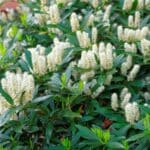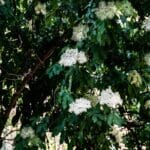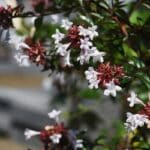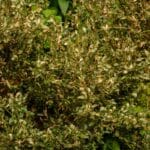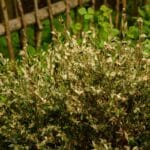Texas Sage is a wonderful native evergreen shrub for zones 8 to 11. These plants are a great low to no-maintenance option for low rainfall areas that will add shades of silver and gray to the landscape when not covered in beautiful purple blossoms.
Read on to learn how to grow and care for this heat-loving shrub.
What Is A Texas Sage Plant?
Texas sage is a native evergreen shrub of the Scrophulariaceae family. These plants have many common names, including Texas sage, cenizo, Texas ranger, Texas rain sage, purple sage, silverleaf, Texas silverleaf, barometer bush, wild lilac, and ash bush.
Texas sage is an ornamental evergreen shrub that can grow up to 8 feet tall and about 6 feet across. Most plants, however, are seen as 3 to 5 feet (0.9 to 1.5 m) tall shrubs.
These plants are native to Texas and Mexico where they can be found growing on rocky slopes in areas with calcareous, alkaline soils.
Texas sage plants have beautiful green foliage consisting of grayish to silver-green leaves, which take on this color due to the presence of fine silvery hairs. Individual leaves are softly textured and grow to around 1 inch (2.5 cm) long.
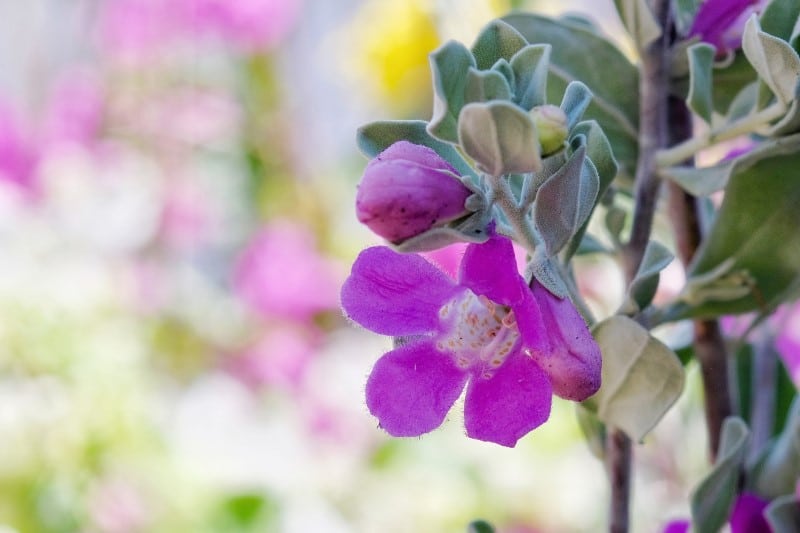
Cultivars/Varieties
- ‘Compacta’ is a smaller form that reaches about 5 feet (1.5 m) tall
- ‘White Cloud’ has white flowers, instead of purple
- ‘Green Cloud’ has green leaves rather than the usual silvery-green
- ‘Silverado’ is noted for its dense, full growth form right down to the bottom of the plant
Texas Sage Flowers
Texas sage bushes put on a fantastic show of tubular purple blossoms in the months of summer and fall, usually just before and after rain. These plants tend to flower right after rainfall, which is where they get the interesting name of barometer bush.
Although the flowers may not survive for very long, the plants may bloom several times in a season. Each individual flower grows up to about 1 inch (2.5 cm) long and has 5 lobes.
The natural flower color of these plants is purple, but pink and white forms are also available. Once flowering is complete, small, inconspicuous 2-valved capsules are produced.
How To Grow A Texas Sage Shrub
Texas sage plants can be successfully grown from seeds or from soft to semi-hardwood cuttings.
For the best results, growing Texas sage in fast-draining alkaline soil is ideal conditions. These plants do well in well drained soil that is kept quite dry to match its natural environment as closely as possible.
In areas with acidic soils, pH can be increased by amending the soils with agricultural lime.
This shrub is tolerant of very high heat and is also highly drought-tolerant (1). That being said, remember to keep your plants watered regularly until they have established healthy roots and are growing well.
Established plants need no additional watering, and don’t water texas sage in winter. But they will grow more vigorously if watered lightly during hot and dry periods.
The texas sage grows in full sun but will survive in partial shade. Plants grown in partial shade will tend to be leggier and flower less abundantly than those grown in the full sun locations they prefer.
The texas sage shrubs can be grown in USDA zones 8 to 10 and will do fine in a wetter environment than its native range, provided it is grown in a fast-draining medium.
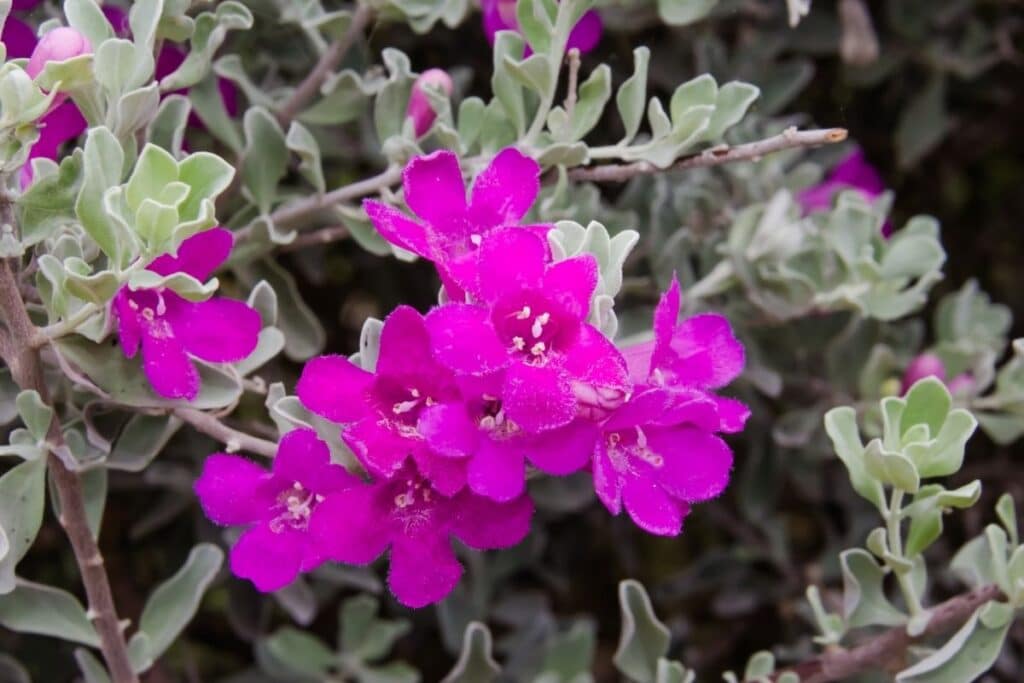
Care and Maintenance
These plants require very little maintenance but will benefit from the occasional trim to promote a neater, denser growth form. The best time to prune these plants is in late winter to early spring to avoid reducing the number of flowers produced later in the summer and fall.
Texas sage plants can be pruned quite heavily and will respond well to rejuvenating cuts.
This shrub does not require fertilizing, and feeding is generally not recommended. They suffer from no notable pest or disease problems, but overwatered plants grown in heavy soils will likely suffer from root rot.
Uses
Horticultural Uses
The sage bush can be grown as an informal hedge and looks better if lightly trimmed to keep it in a neat but natural form. These plants look great along borders or when grown as low screens and can even be grown as beautiful specimen plants in containers.
This is a great plant for water-wise desert-style landscaping and maintenance-free naturalized gardens.
Human Uses
The dried leaves of the cenizo plant have been used to make a healing tea for the treatment of coughing, fever, and nasal congestion. Not much information is available on the efficacy of this natural remedy.
Wildlife Uses
The showy flowers of this plant attract pollinators like bees, butterflies, and hummingbirds. Cenizo shrubs are reported to be deer-resistant.
FAQs
How close to plant Texas sage?
Texas sage (Leucophyllum frutescens) plants should be spaced about 4 to 6 feet apart when planting to allow for their mature size and to prevent overcrowding.
Can you cut sage back hard?
Yes, Texas sage can be pruned back hard, especially in late winter or early spring, to control its size, shape, and promote bushier growth. However, avoid cutting into old wood as Texas sage may not easily produce new growth from older branches.
How often does Texas Ranger bloom?
Texas Ranger or Texas sage typically blooms in response to periods of high humidity or rainfall, often after summer rains. In regions with consistent moisture, they may bloom several times a year, while in drier climates, they might have sporadic or less frequent flowering.
Conclusion
Texas sage is a fantastic showy native shrub. This plant is right at home in hot dry places where it can be shaped or left to grow in its natural form. As a low-maintenance plant that provides year-round interest with attractive silvery foliage and prolific blossoms, this is a great choice for your zone 8 to 10 water-wise garden.
Check our website for more types of bushes to grow.
*image by warat42/depositphotos


